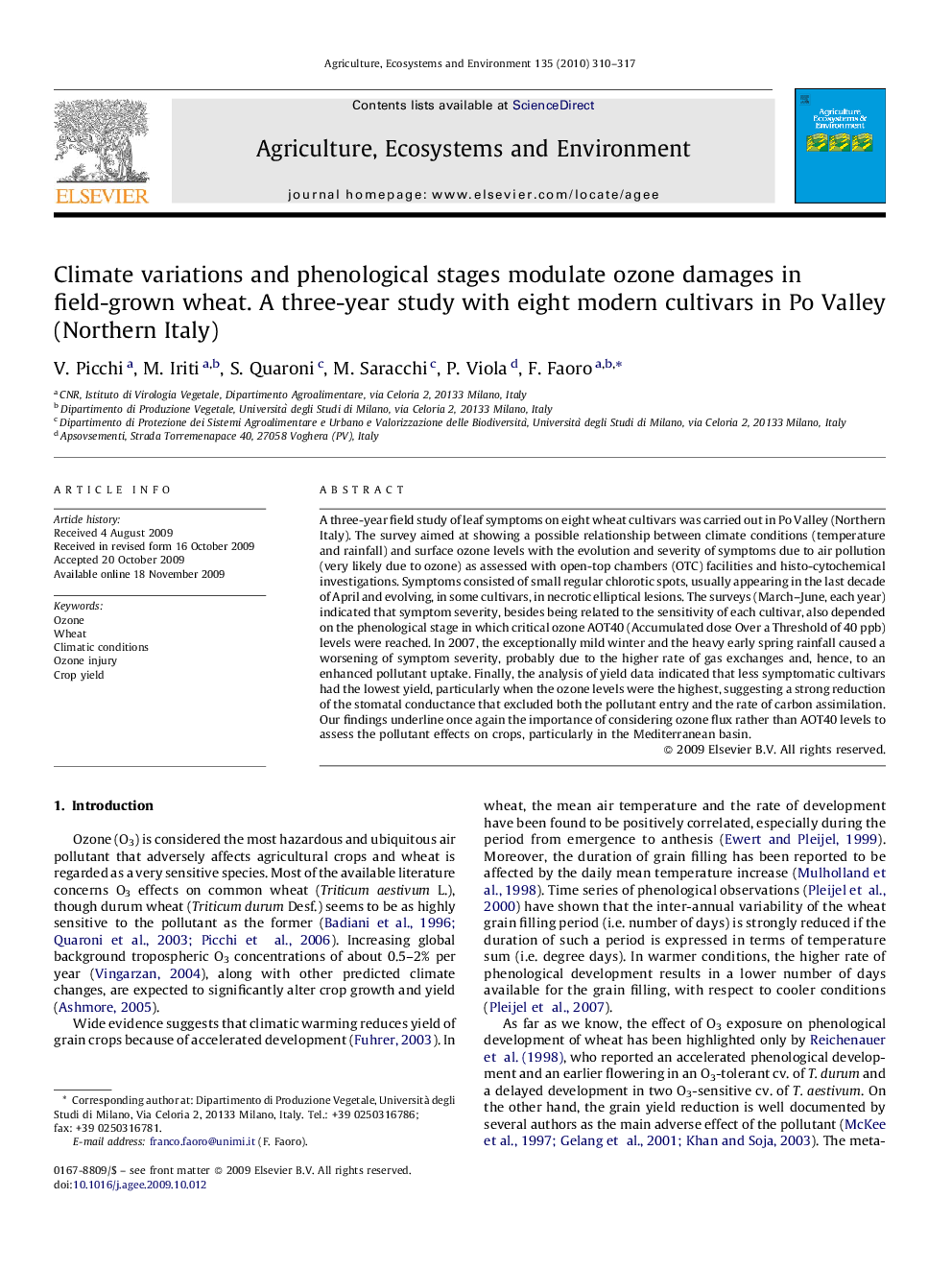| کد مقاله | کد نشریه | سال انتشار | مقاله انگلیسی | نسخه تمام متن |
|---|---|---|---|---|
| 2415079 | 1103945 | 2010 | 8 صفحه PDF | دانلود رایگان |

A three-year field study of leaf symptoms on eight wheat cultivars was carried out in Po Valley (Northern Italy). The survey aimed at showing a possible relationship between climate conditions (temperature and rainfall) and surface ozone levels with the evolution and severity of symptoms due to air pollution (very likely due to ozone) as assessed with open-top chambers (OTC) facilities and histo-cytochemical investigations. Symptoms consisted of small regular chlorotic spots, usually appearing in the last decade of April and evolving, in some cultivars, in necrotic elliptical lesions. The surveys (March–June, each year) indicated that symptom severity, besides being related to the sensitivity of each cultivar, also depended on the phenological stage in which critical ozone AOT40 (Accumulated dose Over a Threshold of 40 ppb) levels were reached. In 2007, the exceptionally mild winter and the heavy early spring rainfall caused a worsening of symptom severity, probably due to the higher rate of gas exchanges and, hence, to an enhanced pollutant uptake. Finally, the analysis of yield data indicated that less symptomatic cultivars had the lowest yield, particularly when the ozone levels were the highest, suggesting a strong reduction of the stomatal conductance that excluded both the pollutant entry and the rate of carbon assimilation. Our findings underline once again the importance of considering ozone flux rather than AOT40 levels to assess the pollutant effects on crops, particularly in the Mediterranean basin.
Journal: Agriculture, Ecosystems & Environment - Volume 135, Issue 4, 1 February 2010, Pages 310–317